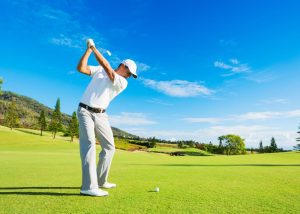
Both tennis and golfer elbow refer to elbow pain due to overuse of the arm and wrist, which can cause inflammation of the tendons surrounding the elbow. Tennis elbow involves the muscles and tendons surrounding the lateral epicondyle, or outside of the elbow, while golfer elbow affects the muscles and tendons surrounding the medial epicondyle, or inside of the elbow. Tennis elbow has been documented and studied since 1883 when avid tennis players complained of pain around their elbow. However, you do not have to be a tennis player or golfer to sustain either injury! Both injuries can worsen over time if left untreated. Treatment is similar, but not the same, for both tennis and golfer elbow and includes rest, physical therapy, and sometimes surgery. The orthopedic and sports medicine team at ORTHOKnox are prepared to accurately diagnose and determine the best treatment plan for your elbow pain at their Knoxville location.
A Closer Look at Tennis Elbow
The tendons in your elbow anchor your muscles to your bones, which allows you to extend and stabilize your wrist. Repetitive motions, such as swinging a tennis racket, can lead to inflammation and irritation of these structures, resulting in pain when gripping or lifting objects, extending your hand, or flexing your fingers. It commonly affects your dominant hand but can affect either side. This pain can be felt from the elbow to the forearm and usually increases when straightening your arm. Tennis elbow usually gets worse over time until people have difficulty performing daily tasks, such as brushing their teeth.
Tennis elbow can be caused by using a racket that is too large or heavy, gripping the racket too tightly, using poor technique when swinging for ground balls, and consistently hitting the ball off-center. Tennis elbow affects both men and women equally, but typically impacts people from ages 30–50. Most people affected by tennis elbow do not actually play tennis! Other athletes commonly affected include baseball, football, squash, and badminton players. Plumbers, painters, bricklayers, and even hairdressers are also prone to get tennis elbow. And don’t forget the knitters and scrapbookers! Even intense crafting can lead to elbow pain.
A Closer Look at Golfer Elbow
Activities involving repeated gripping and flexion of the wrist can lead to irritation and inflammation of the muscles and tendons on the inner side of the elbow, opposite to the side affected by tennis elbow. Pain is usually felt when making a fist, twisting the forearm, lifting objects, or when performing repetitive arm activities.
In addition to golfers, gardeners, painters, and weight trainers are also prone to golfer elbow due to the frequency of flexing, or bending the wrist downward, which is involved in these activities. Risk factors include being overweight, using poor technique, and performing repetitive activities.
Treatment of Tennis and Golfer Elbow
Treatment for tennis and golfer elbow are similar in most cases, but your doctor will determine the best specific plan for you.
Braces can sometimes temporarily help disperse forces that would aggravate your injury if you are unable to rest from activities. But treatment from a physical therapist can be beneficial for long-term recovery. The physical therapists at ORTHOKnox can develop a personalized exercise program to help you strengthen your forearm, shoulder, and wrist muscles.
Tennis or golfer elbow can be treated over time without surgery, however, some more severe cases make it necessary. During surgery, the weakened and pain-causing tendon would be repaired. Recovery would involve temporary immobilization for a few weeks, followed by strengthening exercises, light activity, and return to sports after a few months.
We are here for you at ORTHOKnox if you or a loved one sustains tennis or golfer elbow. Reach out to us if you have any questions. For more information about how the board-certified surgeons, orthopaedic team, or physical therapists at ORTHOKnox can treat you, call (865) 251-3030, or fill out our easy-to-use online appointment request form. We look forward to hearing from you!

